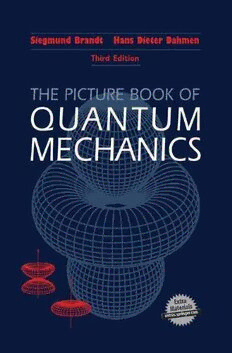
The Picture Book of Quantum Mechanics PDF
235 Pages·2000·23.316 MB·English
Most books are stored in the elastic cloud where traffic is expensive. For this reason, we have a limit on daily download.
Preview The Picture Book of Quantum Mechanics
Description:
The aim of this book is to explain the basic concepts and phenomena of quantum mechanics by means of visualization. Computer-generated illustrations are used extensively throughout the text, helping to establish the relation between quantum mechanics --- wave functions, interference, atomic structure, and so forth --- and classical physics --- point mechanics, statistical mechanics, and wave optics. Even more important, by studying the pictures in parallel with the text, readers develop an intuition for such notoriously abstract phenomena as - the tunnel effect - excitation and decay of metastable states - wave packet motion within a well - systems of distinguishable and indistinguishable particles - free wave packets and scattering in 3 dimensions - angular momentum decomposition - stationary bound states in various 3-dimensional potentials - Kepler motion of wave packets in the Coulomb field - Spin and magnetic resonance Illustrations from experiments in a variety of fields, including chemistry, and molecular, atomic, nuclear, and particle physics, underline the basic as well as the practical importance of quantum mechanics. Illustrations from experiments in a variety of fields, including chemistry, and molecular, atomic, nuclear, and particle physics, underline the basic as well as the practical importance of quantum mechanics. From reviews of earlier editions: Most serious students of physics and all of their teachers will want to consider having this orderly and graphic outline of introductory quantum theory at their fingertips. --- American Journal of Physics The book is of high quality and well written.... [It] helps the student of quantum mechanics get a better intuition of the subject. --- International Journal of Quantum Chemistry This is a unique book. --- Nature .
See more
The list of books you might like
Most books are stored in the elastic cloud where traffic is expensive. For this reason, we have a limit on daily download.
